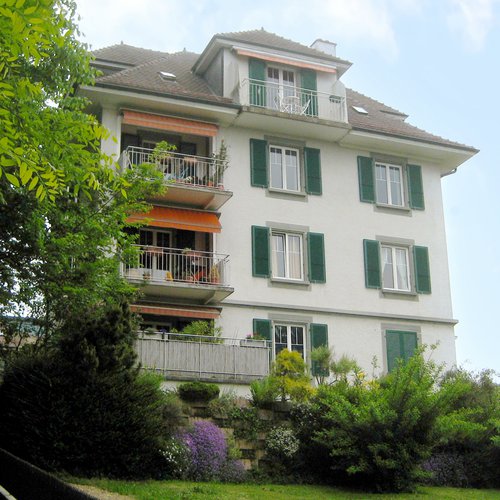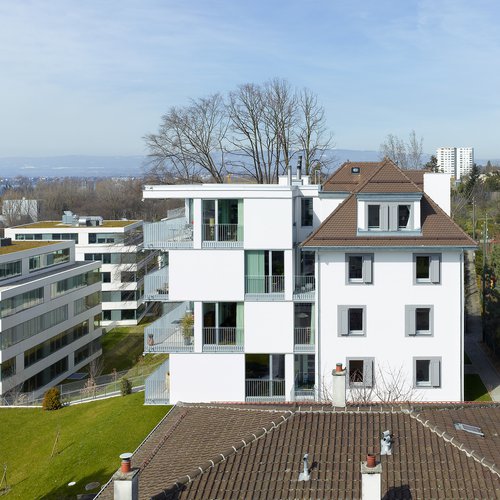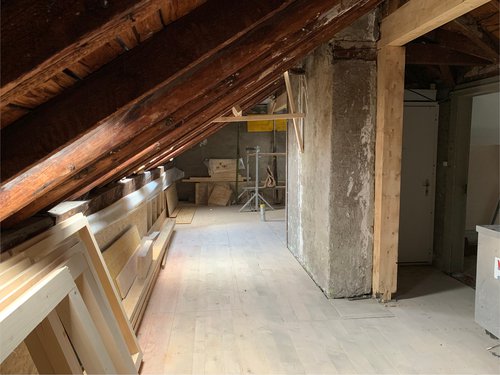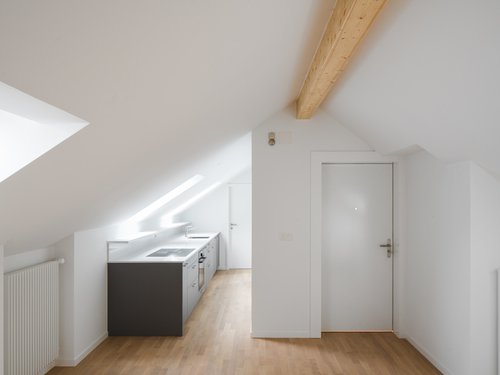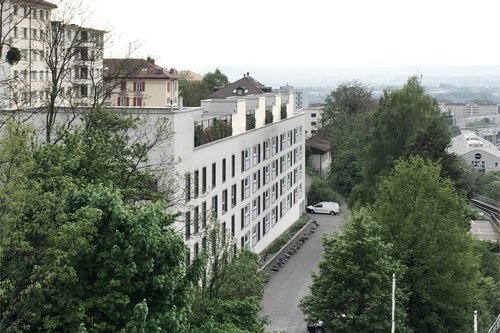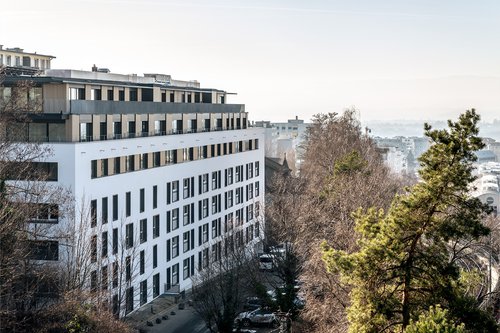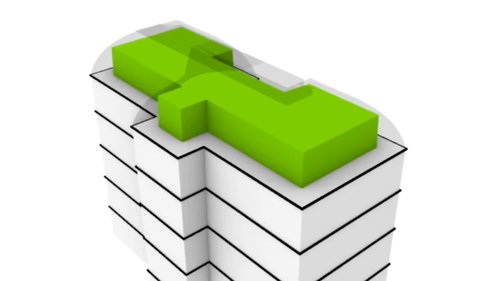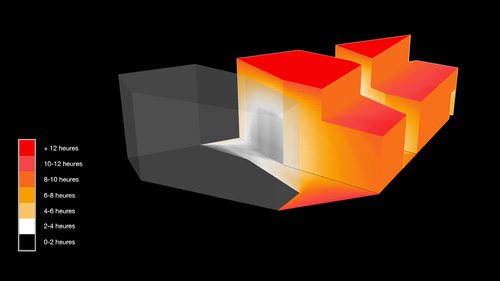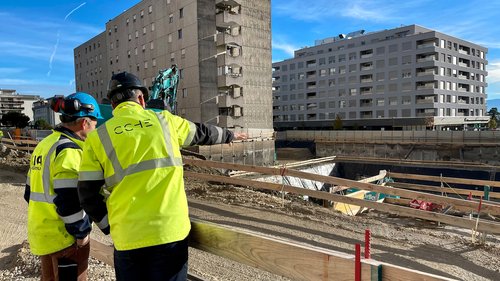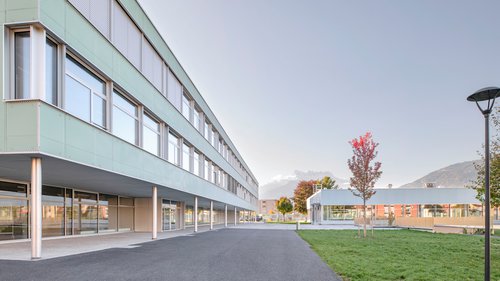In terms of energy transition, building renovation is a major challenge. In the current context, energy renovations represent a major lever for action, both in terms of improving the energy efficiency of buildings in Switzerland and enhancing the value of existing buildings, while at the same time respecting building heritage. Energy efficiency forms part of CCHE's DNA, and the company has been working with this issue for decades. CCHE provides its customers and partners with a full range of expertise in the fields of renovation, conversion, and refurbishment.
Targeting your needs
For any renovation project, it’s important to plan the renovation as a whole and to take account of current regulations. This starts with a careful analysis of the property and clear identification of the owner’s needs. It also involves considering the existing property’s building potential and whether an extension is feasible.
Determining the work required and budgeting.
The initial diagnosis and audit will enable owners to prioritise the work and any associated costs. This way they can make wise investments to improve the property as much as possible. A maintenance and renovation schedule, as well as an investment plan, will be drawn up over several years to optimise investment while gradually improving energy efficiency in a coordinated way. An analysis of building potential will also be carried out simultaneously.
Diagnosis and calculation of renovation costs: EPIQR+
EPIQR+ provides a diagnosis of the functional state of your building's architectural elements and technical installations. This information is used to establish the building's energy performance and to calculate the cost of refurbishment based on different renovation scenarios.
Energy audit: the CECB+ certificate
In addition to a full energy audit, the CECB® Plus certificate (Certificat énergétique cantonal des bâtiments) provides various work options, as well as an estimate of costs and any subsidies. It is an invaluable decision-making tool, enabling you to define the framework for your project and measure the efficiency of the building envelope and overall energy efficiency. CCHE works with recognised and certified experts to carry out this energy audit.
Balancing the energy label and the CO2 balance
Improving the energy label is a key factor in the future of your property and will also make it easier to sell. However, you also need to consider your CO2 footprint, which can vary depending on the type of intervention and the choice of heat production method chosen. The aim is to ensure that this CO2 balance is already adapted to the future requirements of CO2 law. Sometimes the investment required to obtain a better energy label is disproportionate, whereas this investment could be injected into another property to make a bigger leap in improving the label status. As a result, in order to propose the best solutions to owners, CCHE is constantly analysing the balance between energy label, CO2 balance and investment.
When carrying out a renovation project, it is also important to consider the building potential of the property. Depending on changes in municipal regulations, it may well be possible to improve the building potential. CCHE analyses the current municipal regulations to find out what types of change of use are possible, such as extending or raising the existing building or converting the attic space, while considering the investment and return on investment. In this way, new financial income can be generated, helping to finance the building’s energy-efficiency renovation.
An extension must be properly attached to the existing building and well-integrated in terms of use, architectural quality, and techniques. Attention must also be paid to the impact of the extension on circulation, entrances, and outdoor spaces. CCHE carefully studies the characteristics of the existing building to create a technically and aesthetically coherent extension.
Villa Les Bains, Lausanne - Before and after work
These areas are often used as storage rooms and are not insulated. By making roof spaces more energy-efficient (depending on their geometry), new living spaces can be created by taking advantage of existing staircases and lifts. In one simple operation, the building's energy performance can be improved, and the number of dwellings increased. Depending on the regulations in force, the external appearance of the roof can be modified slightly (new or larger dormers) or more extensively (new balconies).
Ancienne Douane, Lausanne - Attic space before and after works
Renovation work was carried out on a building complex located in the heart of Lausanne’s historic city centre. It comprises six Grade 3 listed buildings with a total of 77 rental flats and ground floor shop windows. The renovation work involved the complete conversion of the kitchens and bathrooms, the creation of new flats in the attic, the replacement of electrical, sanitary, heating and ventilation installations, and the modernisation and upgrading of lifts, railings, staircases, balconies, and landing doors.
If a building is to be raised upwards, local regulations must be considered when determining the amount of additional floor space possible and its visual impact on the neighbourhood. In addition, the position of the existing vertical circulation, staircases, and lift, must be taken into account to guarantee easy access to the elevation. Just like with an extension, the technology used will need to connect the new surfaces and also ensure that the new technology is properly integrated into the roof space.
Tivoli 2, Lausanne - Before and after works.
The Tivoli 2 project in Lausanne, for Next Immobilier SA, involved raising the building by 3 storeys to create 27 additional flats and installing solar panels on around 70m2 of the roof, while simultaneously maintaining the existing architectural style.
In 2020, CCHE created a CCHE Digital working group which brought together computer graphics experts, BIM specialists, designers, and parametric designers which work together to develop digital tools for project design work. These tools optimise our work and enable us to overcome the limitations of traditional tools. By building our own algorithms, we have tailor-made tools for exploring shapes and variations.
As part of energy-efficiency renovation and elevation projects, our teams have developed a roof template algorithm that generates a volume base to facilitate the development of variants in accordance with the required standards. It incorporates all the site and project constraints to help architects assess the building's constructability potential. Algorithms for solar studies and Kwh calculations can also be used to quantify solar gain and hours of sunlight, enabling the positioning of solar panels to be optimised.
See "Parametric Design Tools"
Roof and parapet size: Optimisation of the roof and parapet size in compliance with governing standards.
Solar and light study: Quantitative calculation of solar gain and sunshine hours.
Photovoltaics: Kwh calculation: solar panel positioning optimisation.
All property owners are obliged to maintain their property to ensure that it is safe and healthy. Renovation and/or maintenance work is therefore necessary and must comply with the many standards and directives imposed by the authorities, such as fire, SIA 500, BPA and other standards. In addition to in-house experts, CCHE works with experienced and carefully selected contractors to implement an interdisciplinary and coordinated approach to optimise work and costs.
The protection of natural and cultural heritage is enshrined in cantonal legislation, and certain requirements may vary between cantons. The various heritage-related regulations need to be addressed at an early stage and discussed with the relevant authorities so that the right interventions can be carried out to improve the energy efficiency of the property while preserving its architectural heritage. Our extensive experience of working on listed buildings means that we are well versed in complex procedures and sensitive interventions.
Once the scope of the renovation work has been determined, deciding whether the property can remain occupied during the work is a major decision to be considered. Renovation on an occupied site entails constraints in terms of managing nuisance, communicating with occupants, and organising the work. CCHE has the know-how to carry out detailed work plans, provide support, and communicate with tenants to minimise the impact of the works as much as possible. Carrying out work on an occupied site means that it can continue to operate while the work is being carried out, thereby limiting operating or rental yield losses. Our diverse experience in occupied sites and environments, both in the residential and commercial sectors, as well as in the hospital sector, has enabled us to develop specific and rigorous methodologies to meet these different challenges.
Urban regeneration of the Suettaz district, Nyon, see site monitoring
Conversion and renovation of the "Les Dents du Midi" school building and the "Planchette" gymnastics hall
